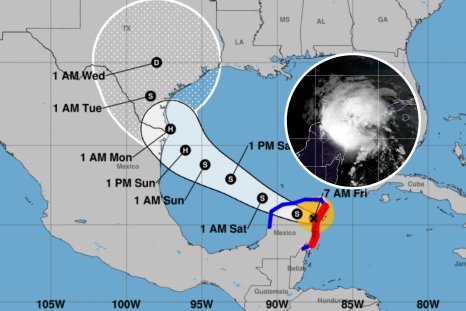Archaeologists have challenged a popular theory in a recent study about the abandonment of an ancient city that was the largest Indigenous settlement in North America.
Cahokia was an iconic Native American city located in what is now southern Illinois, just across the Mississippi River from present-day St. Louis, Missouri. The settlement was occupied from around A.D. 1050 and reached its apex around a half-century later.
The city served as the center of a Native American civilization known as the Mississippian culture, which flourished across what is now the Southeastern, Eastern and Midwestern United States from around the 8th century to the era of European colonization. In its heyday, Cahokia is thought to have been home to tens of thousands of people, making it one of the largest settlements in the world at the time.
But by around A.D. 1400, the city appears to have been practically abandoned. The factors driving the settlement's demise have long been shrouded in mystery and the subject of debate among scholars, with previous research indicating that a number of drivers were involved.
Experts have identified a number of potential factors, including drought, flooding, climate, change, the overexploitation of resources, and sociopolitical instability.
Now a study published late last month in the peer-reviewed journal The Holocene has cast doubt on a popular theory about the abandonment of the site—one which proposed that the depopulation was driven by a massive crop failure brought on by a prolonged drought.
However in the latest study, researchers Natalie Mueller with Washington University in St. Louis and Caitlin Rankin at the U.S. Bureau of Land Management have proposed that the residents likely had other reasons to leave the city.
For their study, the researchers collected and examined soil samples from the Cahokia Mounds State Historic Site, which consists of the remains of the ancient city—including its characteristic earthworks. The area has been designated a national historic landmark and listed as a United Nations Educational, Scientific and Cultural Organization (UNESCO) World Heritage Site.
The researchers then extracted isotopes of carbon from these soil samples. Isotopes are atoms of the same element that have the same number of protons, but a different number of neutrons. The carbon isotopes were left behind by plants that were growing around the time that Cahokia's population collapsed and droughts were affecting the region.
Analysis of these carbon isotopes can reveal what types of plants were present at a given time. The team's investigations indicated that there was no radical shift in the types of plants growing in the area, suggesting they were not significantly affected by the long period of drought.
"We saw no evidence that prairie grasses were taking over, which we would expect in a scenario where widespread crop failure was occurring," Mueller said in a press release.
Cahokia was a sophisticated society, so it is feasible that residents managed to work out ways to keep crops thriving throughout the drought thanks to special engineering solutions, according to the authors.
"It's possible that they weren't really feeling the impacts of the drought," Rankin said in the release.
A clear picture of the city's abandonment has not yet emerged, but the latest work adds to mystery of the story. According to Mueller, the depopulation was likely a gradual process.
"I don't envision a scene where thousands of people were suddenly streaming out of town," she said. "People probably just spread out to be near kin or to find different opportunities."
"They put a lot of effort into building these mounds, but there were probably external pressures that caused them to leave," Rankin added. "The picture is likely complicated."
One 2020 study published in the journal American Antiquity found that the abandonment of the Cahokia region in 1400 may have been a more complicated process than previously imagined. The research proposed that a fresh wave of Native Americans had repopulated the area by around 1500, although the population had seemingly declined again by roughly 1700.
Do you have a tip on a science story that Newsweek should be covering? Do you have a question about archaeology? Let us know via science@newsweek.com.
Disclaimer: The copyright of this article belongs to the original author. Reposting this article is solely for the purpose of information dissemination and does not constitute any investment advice. If there is any infringement, please contact us immediately. We will make corrections or deletions as necessary. Thank you.



